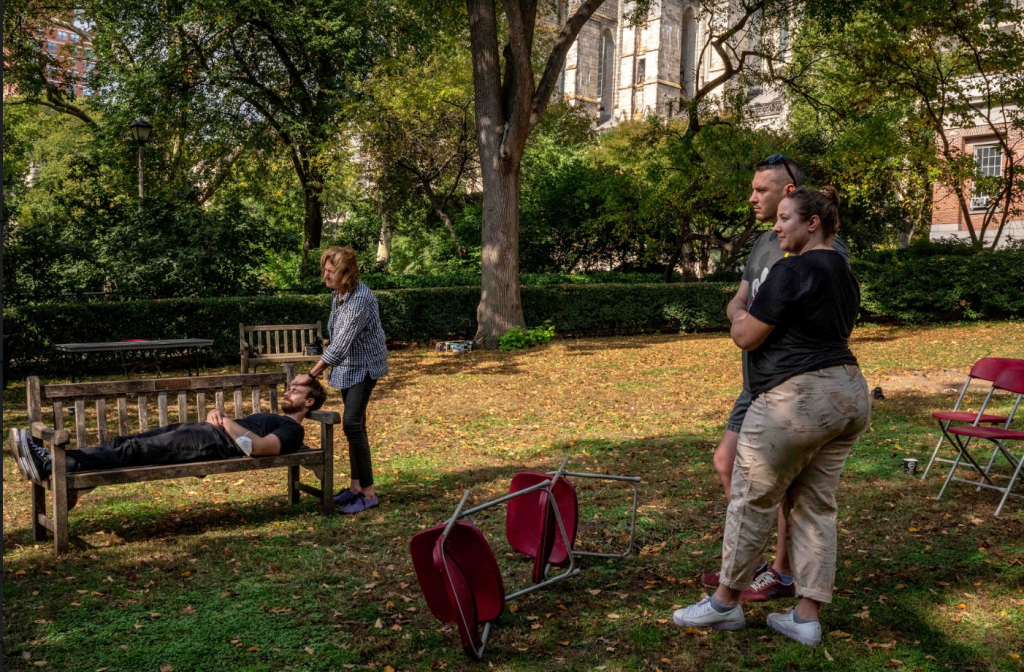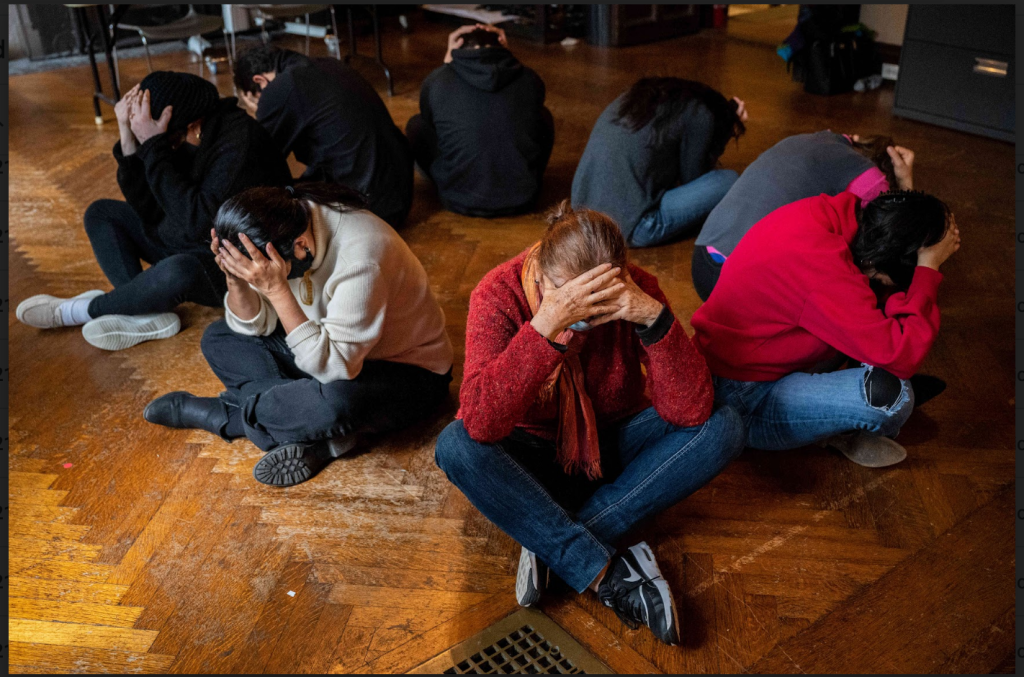The central focus of George Sanchez and Maria Jose Contreras’ workshops (in October and November respectively) was the body: the body that “keeps the score” of its habits, desires, and accumulated traumas, whether or not that score ever makes its way into verbal expression or outward acknowledgement. The goal of these workshops was to explicitly offer that acknowledgement: to make the score visible, legible, and communal, rather than burying it in the rush of “going back to normal life” after a year of COVID lockdown, precarity, illness, and death. The goal was also to find expressions for it that were not entirely linguistic: to use the body itself, and its myriad senses, to bring out the body’s aches and sores. As such, two central activities from the workshop stood out the most to me: George’s “Image of Covid” activity (adapted from Augusto Boal’s image-theatre) and Maria’s “Body Maps.”
The “Images of Covid” activity was powerful because it came on the heels of “Images of Power,” in which we were encouraged to set up three chairs, a table, and a water bottle in such a way that gave one of the chairs ultimate power over the rest. It was only after interrogating various permutations of these objects and analyzing what power meant to us as a group that George prompted us to create a similar “image” to capture the Covid experience. One participant, Thomonique, took the lead, and the “image” wound up being a woman feeling the temperature of a reclining (and potentially dying) man, while a couple held hands at a distance and wept. On the face of it, this image was less “impressive” than the inanimate and highly imaginative images of power that preceded it. But what it allowed the participants to do was share their experiences organically as prompted by the image before them. This organic story-telling that emerged from the group was worlds apart from more stilted variations of “processing the pandemic” that I have experienced in the past, in which folks go around in a circle and confess their suffering to strangers. Though I had experienced George’s workshop once before among only ZCMP fellows in September, this moment had not taken place the first time, largely because we inadvertently settled into the more familiar sharing-in-a-circle structure at the time. This, however, was far more moving. The stories participants shared were unprompted, and all used the image as a jumping-off point for their personal lives.
Maria’s “Body Maps” succeeded in an entirely different way: rather than encouraging us to focus on the events of the past year (the “plot points” within the monotony, as it were), it gave us sounds, shapes, and colors through which to narrate our body’s unique journey through the pandemic—a story we otherwise would have no space to really tell. We were asked to trace outlines of one another on large canvases and then draw within those outlines where the pandemic had left its marks on our bodies and how. Each map turned out completely unique. For some folks, the body was loud: ambulance sirens blaring within the mind, fires engulfing the heart and lungs, shackles chaining the arms and legs. For others, it was silent: empty spaces, vines winding through the legs and arms, an astronaut’s glass shell surrounding the head, or the head transforming into a luminous laptop screen. The stories we told through the artworks then manifested in speech. Maria asked us to explain the effect on our bodies to one another through a match exercise—we had to speak for as long as the match was burning, then pass a match to the next person in the circle. The maps we had just drawn seeped into our stories, and the focus on the match’s weak light took pressure away from the verbal constructions themselves. It was a magical moment, much like the one with Thomonique’s image in George’s workshop. Some folks cried in the small window of time their match gave them; others expressed their gratitude for the bodies they had come to find themselves in. In that way, the workshops completed one another, moving between visual and embodied stories, and transforming the most private and intimate memories into elements of collective experience.
Author Bio: Aya Labanieh is a Ph.D. candidate in the English and Comparative Literature Department, where she works on imperial conspiracies and their conspiracy-theory afterlives in 20th and 21st century Middle Eastern literature and politics. Her broader interests include conspiratorial thinking within a global digital context, and how conspiracy theories function as alternate histories, heretical discourses, popular critiques, epistemic injuries, and modern enchantments.
The Zip Code Memory Project seeks to find community-based ways to memorialize the devastating losses resulting from the Coronavirus pandemic while also acknowledging its radically differential effects on Upper New York City neighborhoods. Through a series of art-based workshops, public events, social media platforms, and a final performance/exhibition at the Cathedral of St John the Divine, community members participate in building networks of shared responsibility and belonging.




